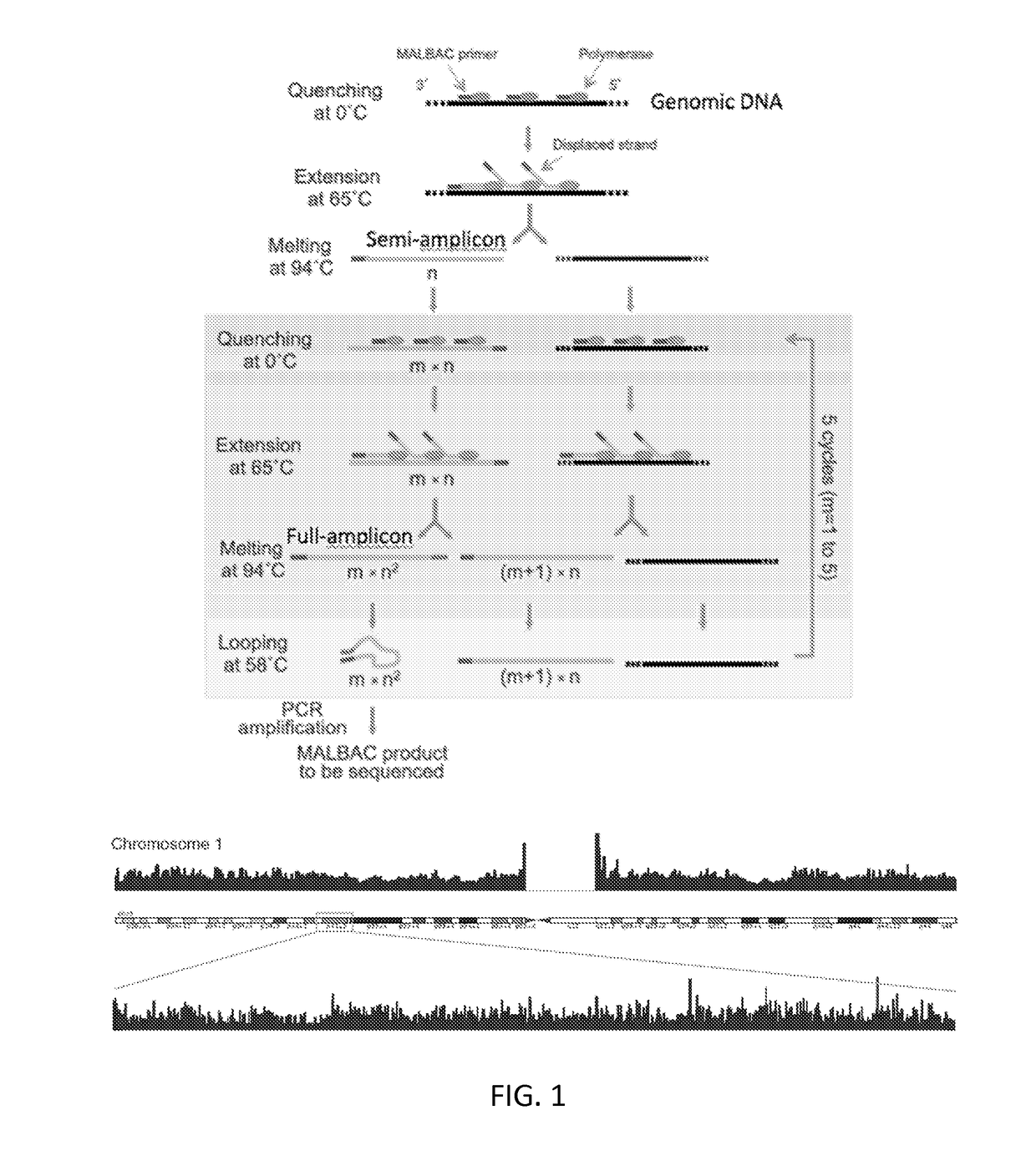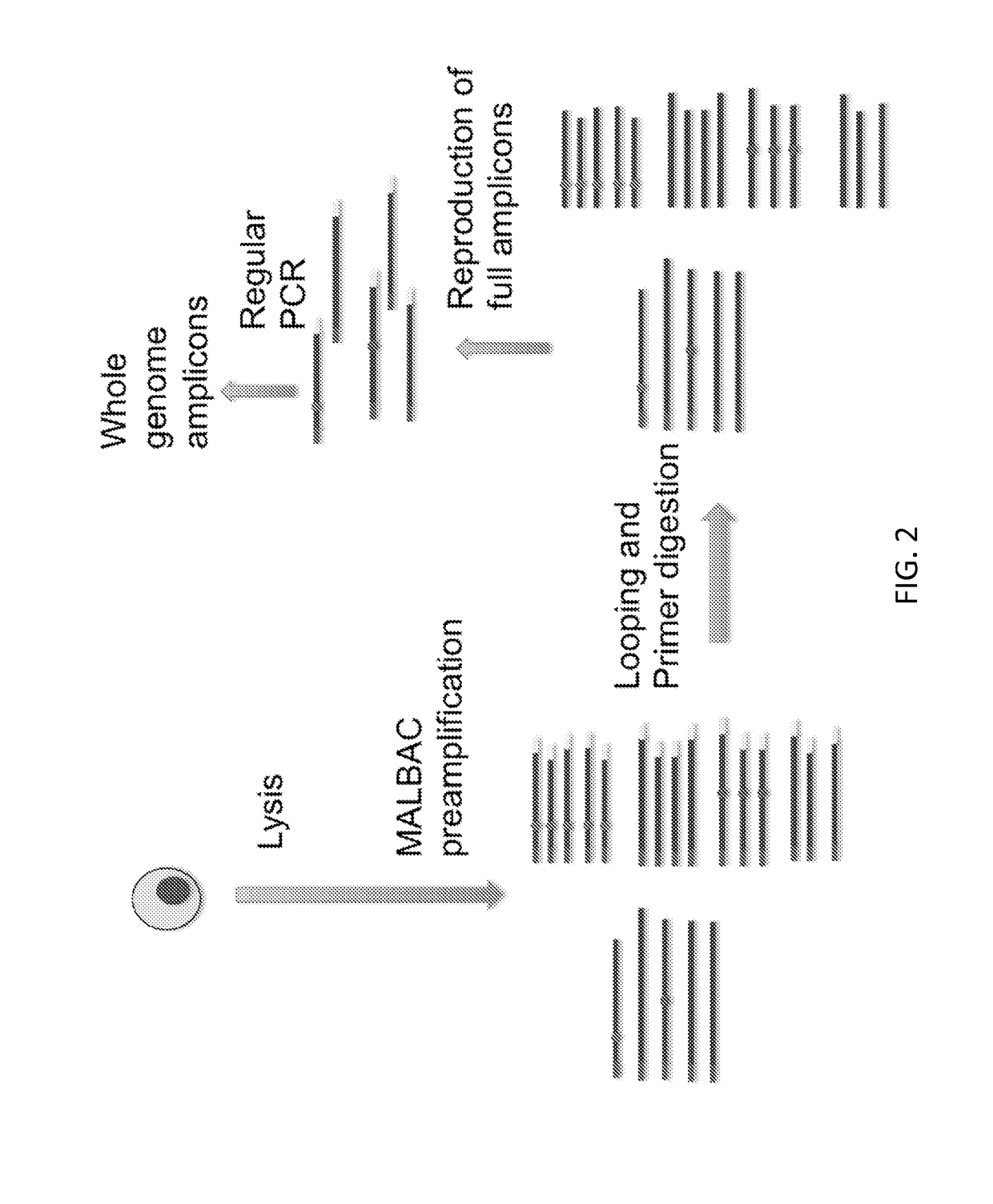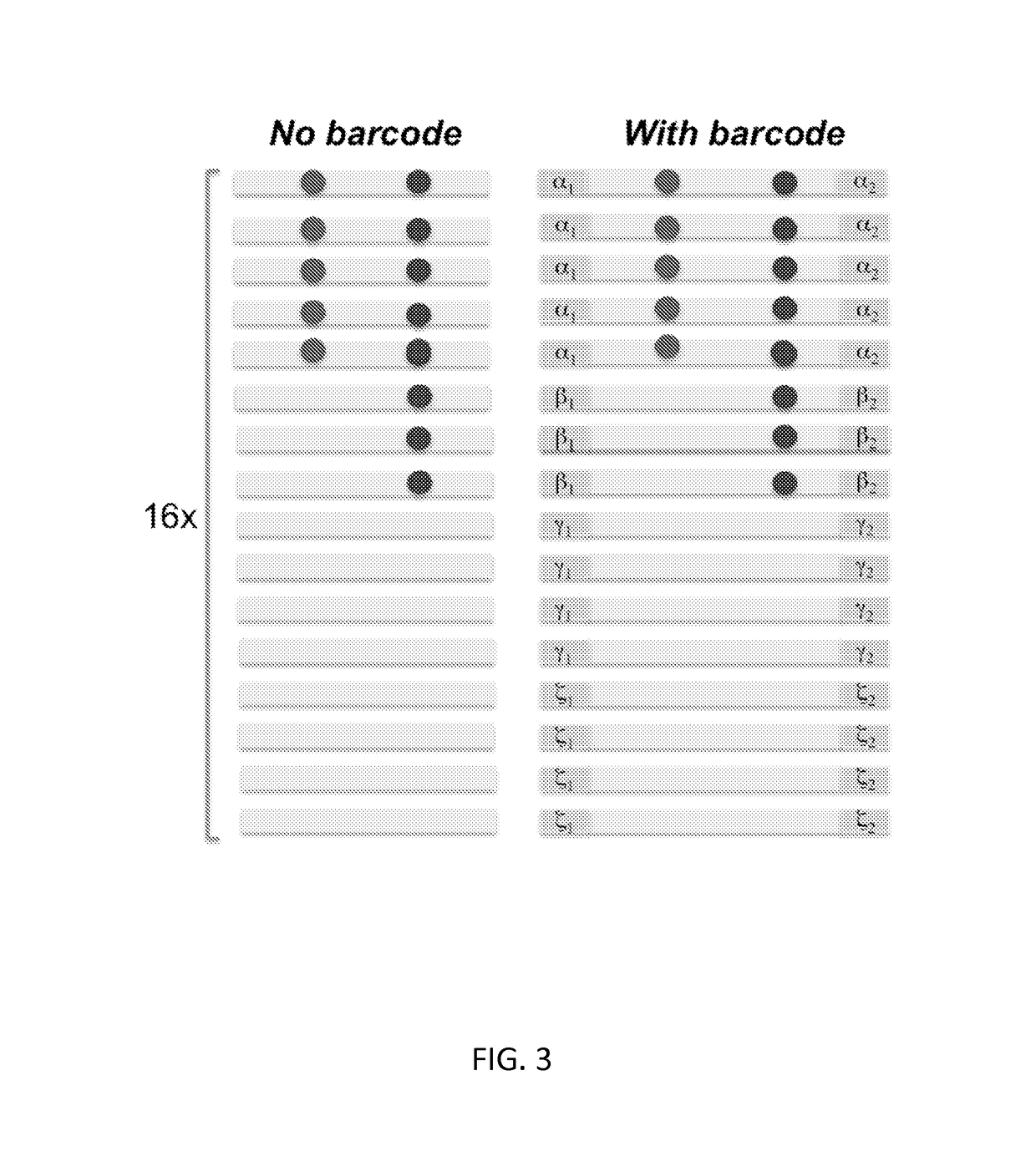Methods of linearly amplifying whole genome of a single cell
a single cell, whole genome technology, applied in the field of nucleic acid amplification, nucleic acid manipulation, genetics, medicine, etc., can solve the problems of inconvenient reporting of whole genome whole-genome sequencing, unsatisfactory whole-genome representation, and low coverage of methods used to date, so as to improve the accuracy of whole-genome sequencing and improve the accuracy of the method , the effect of high uniformity
- Summary
- Abstract
- Description
- Claims
- Application Information
AI Technical Summary
Benefits of technology
Problems solved by technology
Method used
Image
Examples
example 1
Isolation of Complete Single Cells from Tissue Sample
[0072]Histological tissue slides are prepared using commercial cryostat. Sections were prepared of 100-200 μm thickness of paraformaldehyde-fixed solid tissue. The cells of interest are cut from the section slide by laser microdissection microscopes (Leica, MMI etc.). The individual cells are dissociated from the microdissected tissue section using standard cell dissociation protocols. The complete single cells are collected into individual tubes. The individual cells are lysed in 3 to 5 μl Lysis buffer (30 mM Tris-Cl PH 7.8, 2 mM EDTA, 20 mM KCl, 0.2% Triton X-100, 12 μg / ml Qiagen Protease) is added to the side of the PCR tube and span down. The captured cell is then thermally lysed using the using following temperature schedule on PCR machine: 50° C. 2 hours, 75° C. 20 minutes, 80° C. 5 minutes.
[0073]Multiple Cycles for Linear Production of Semi-amplicons (FIG. 4)
[0074]In the first round of amplification, a pair of quasi-degener...
example 2
Single Tube or Multiple Tube Amplification of Amplicons Using Standard Methods
[0109]The following reaction buffer is prepared and added to the PCR tube which is being maintained on ice.
[0110]3.0 μl ThermoPol Buffer (NEB)
[0111]1.0 μl dNTP (10 mM)
[0112]26 μl H2O (UV treated)
0.1 μl primer (100 μM)(5′-GTGAGTGATGGTTGAGGATGAGTG-3′; SEQ ID NO: 5)
[0113]The amplification buffer can be split into multiple tubes. The linearly amplified products will be split into each tube (FIG. 10). Amplification is performed with standard PCR procedures as follows to generate 1-2 μg of DNA material.
[0114]94° C.-20 seconds
[0115]58° C.-20 seconds
[0116]65° C.-1 minutes
[0117]72° C.-1 minutes
[0118]Repeat the above cycle 20×
[0119]72° C.-5 minutes
[0120]4° C.-∞
[0121]After the second round of amplification, DNA can be purified using a Qiagen column and stored for a next procedure to remove the primer end of the DNA amplicons.
[0122]The amplicon products can be used for whole genome or targeted (e.g., exome and any lis...
example 3
Whole Genome Single Fragment Amplification in Micro-Droplets / Wells
[0123]Linearly amplified amplicons from EXAMPLE 1 cover the whole genome of the single cell DNA and can be used as the starting materials for the following procedure (see FIG. 6).
[0124]Additional methods of amplification known to those of skill in the art can be used as follows.
[0125]The product is split into tens of millions of picoliter micro-droplets / wells or femtoliter micro-droplets / wells. Commercial available microfluidic based droplet emulsifiers or microfluidic devices with picoliter or femtoliter microwells can be used. By reaching to saturation of the amplification (limited either by available primers or dNTPs) in each reaction micro-droplet / well, the individual DNA fragments are amplified to similar level.
[0126]Additional methods of creating large scale of individual reactions known to those of skill in the art can be used as follows.
[0127]PCR reactions can be performed for amplifying single amplicons in ea...
PUM
| Property | Measurement | Unit |
|---|---|---|
| temperature | aaaaa | aaaaa |
| temperature | aaaaa | aaaaa |
| temperature | aaaaa | aaaaa |
Abstract
Description
Claims
Application Information
 Login to View More
Login to View More - R&D
- Intellectual Property
- Life Sciences
- Materials
- Tech Scout
- Unparalleled Data Quality
- Higher Quality Content
- 60% Fewer Hallucinations
Browse by: Latest US Patents, China's latest patents, Technical Efficacy Thesaurus, Application Domain, Technology Topic, Popular Technical Reports.
© 2025 PatSnap. All rights reserved.Legal|Privacy policy|Modern Slavery Act Transparency Statement|Sitemap|About US| Contact US: help@patsnap.com



